Archive for 2021
A raid with severe repercussions: the mutilation of 8th Lincolns dead at Ghissignies, 2-3 November 1918
In the course of research for a client whose relative had served in the 13th Battalion Royal Fusiliers I was reading the unit war diary when the following passage, taken from 11 November 1918, the day the armistice came into effect, stopped me in my tracks:
11 November 1918
Bodies of dead killed on 24/10/18 were buried at GHISSIGNIES. It was found that the majority of the men had been deliberately shot in the head by the enemy. The men in question had been wounded: those that were able to walk were taken by the enemy and the remainder dealt with as stated above. Bodies of men of the Lincolnshire Regt. who had been killed about 30th Oct. were found to have been mutilated, hands hacked off at the wrists and eyes gorged [sic] out.
[13th Battalion Royal Fusiliers War Diary, UK National Archives, Ref: WO95/2538/3]
I have read plenty of British atrocities against German troops on the Somme in 1916 (there are files of such accounts in the archives at Freiburg). But on the British side I was only aware of Major Henry Hance’s (179 Tunnelling Company RE) description of Mash Valley on the Somme in mid-July 1916 in which he describes the British dead having been bayoneted ‘always thro’ the neck’ and the dead hanging on the wire having head their heads bashed in. But the 13th Royal Fusiliers war diary extract invited more research. Could this really have happened – British soldiers with hands hacked off and eyes gouged out by the enemy?
No additional information was available in the 13th Royal Fusiliers diary so moved on to the 8th Lincolnshire Regiment’s diary. The 13th Royal Fusiliers’ account had mentioned the battalion’s dead ‘who had been killed about 30th Oct.’ A brief look at the 8th Lincolns’ war diary confirmed any dead could not have been from that date (the battalion were in the line under heavy shellfire and had two Other Ranks wounded). Much more likely was the night of 2-3 November when ‘A’ Company raided German posts at the northern end of the village of Ghissignies, southwest of Le Quesnoy (of New Zealand Division fame).
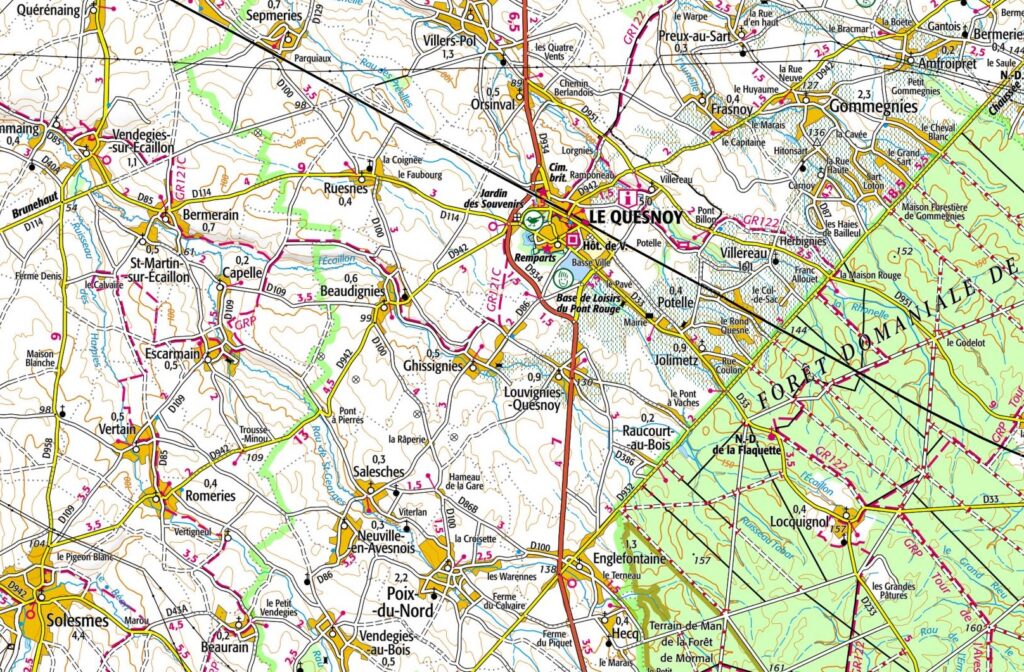
IGN map showing Ghissgnies in relation to Le Quesnoy
A Google Maps link to the village of Ghissignies can be found by clicking HERE.
The relatively sparse diary entries for 2-3 November are recorded below:
2/11/18 In the line – “A” Coy raided posts at level crossing in X5a at 23.45 hrs. Between 30 & 40 casualties inflicted on enemy. Heavy resistance offered. Casualties 11 O.R. killed, 18 O.R. wounded, 1 O.R. missing, 1 O.R. acc[identally] wounded.
3/11/18 In the line – Trench mortar activity on front line – casualties 12 O.R. killed, 17 O.R. wounded, 1 O.R. missing, 1 wounded acc. sprained wrist.
[8th Battalion Lincolnshire Regiment War Diary, UK National Archives, Ref: WO95/2529/1]

Annotated map extract from 37th Division HQ war diary showing Ghissignies and the chapel crossroads with area of raid marked
Clearly, the success of a single company raid which resulted in 31 casualties to the attacking force is questionable. The following day the Battalion cleared the position raided on 2 November with relatively little loss. Their casualties that day were the last sustained by the Battalion in the Great War.
4/11/18 “D” Company withdrew 2 platoons to SALECHES in X.19.b – 2 platoons followed left flank 111th Infantry Brigade mopping up the crossing & orchards in vicinity of chapel in X.5.a & b and R.35.. c & d. – 1 platoon establishing posts X.5.b.30.85 to R.35.d.15.15 –1 platoon X.b.20 – 70 to X.5.b.10.90. 24 prisoners captured in this operation – working from the south, 2 platoons of B. Coy mopped up Railway to Level Crossing in X.5.a.
In the evening the Bn moved to LOUVIGNY in area S.8.b & d.
[8th Battalion Lincolnshire Regiment War Diary, UK National Archives, Ref: WO95/2529/1]
As is so common when studying trench raids, the area in which this action took place is very small. British wartime maps (above) show the Le Quesnoy road leading to a crossroads at the north-eastern edge of the village. A chapel is marked on the crossroads but online research shows this to have been the existing calvary which was unveiled in 1852.
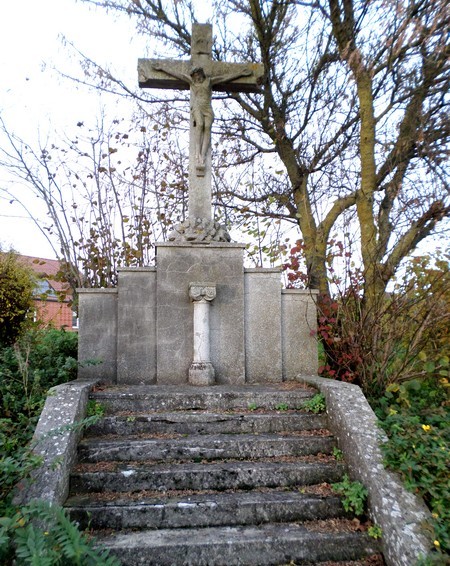
The Calvaire at the crossroads, Ghissignies. Image from: http://villesetvillagesdelavesnois.org/ghissignies/ghissignies.html
As part of 63rd Infantry Brigade, I hoped that the 8th Lincolns’ raid of 2-3 November would receive more attention in the Brigade war diary. And it was here that I struck gold with a detailed account provided in a Report on Operations, Oct 23rd – Nov, 4th, 1918, including gruesome descriptions of disfigurement and mutilation of British dead:
Nov 2nd.
At 2345 hours 8th Lincolnshire Regt. raided the enemy’s positions on the railway about the Chapel, X.5.a., under an artillery and trench mortar bombardment. This raid was carried out on a one platoon front with one platoon in close support. The railway was entered by the leading platoon and several casualties were inflicted on the enemy. 3 prisoners were taken but subsequently escaped. The supporting platoon was unable to reach the railway owing to heavy hostile machine-gun fire from the railway cutting. Our casualties were somewhat heavy, including 12 other ranks reported missing. In the subsequent advance on the 4th inst., the bodies of 11 were found buried by the enemy in the railway cutting. On being examined the bodies were found to have been terribly disfigured. One, the body of No. 241186 Corpl. G.A. DICKENSON, had six bayonet wounds, and one hand cut off. In addition both eyes were missing and had apparently been gouged out. It is not thought possible that these wounds could have been inflicted in the course of actual fighting.
[63rd Infantry Brigade War Diary, UK National Archives, Ref: WO95/2529]
A railway embankment bisected the Le Quesnoy road just before the crossroads. However, as noted in 63rd Brigade diary, British maps of the area were not wholly accurate:
The maps of this area had been found to be very misleading: what was taken to be a level crossing at X.5.a.5.5 was proved to be a very steep railway cutting fully 12 feet deep with a destroyed road bridge over the railway.
So, for the two assaulting platoons, what had appeared to be a standard raid had swiftly deteriorated into a tragic and bloody action. The war diary for 37th Division General Staff HQ reiterates the salient points of the raid:
Successful raid carried out by 63rd Brigade at 23.45 hours. Objective of raid level crossing X.5.a. Raiding party reached objective and inflicted severe casualties on the enemy. 3 prisoners were taken but owing to the escort being wounded on their way down with prisoners they escaped.
[37th Division Headquarters Branches and Services: General Staff War Diary, UK National Archives, Ref: WO95/2515]
However, it was 37th Division Intelligence Summary No 8., dated 7 November 1918 that provided most detail. It showed that the attacking force was met by sustained machine gun fire as soon as the advance began. One party working north along the railway made it into the 12ft deep railway cutting which was full of cubby holes, both at the bottom and higher up. Heavy fighting ensued and the report concluded thirty casualties were sustained by the Germans (almost certainly an overestimate – there are countless examples of British estimates of German casualties in raids bearing no relation to actual losses recorded in German reports. These numbers should always be treated with a healthy dose of scepticism – after all, those making the claim knew all too well there was no way their superiors could check inflated claims). Having suffered heavy casualties themselves and low on bombs and ammunition, the party withdrew. Other parties aiming to work south along the railway were stymied by sustained machine gun fire which caused heavy losses amongst the attacking Lincolns.
There is also mention of three German prisoners shooting their lone escort and escaping and a warning that prisoners should be properly searched for weapons upon capture to prevent such instances occurring.
7/11/18.
A raid was carried out on the night 2/3rd of November by two platoons of the right Bn in the vicinity of the level crossing in X.5.a. at 23.45 hours. The assembly was successful, but two machine guns, one on the railway crossing and the other about 30 yards north of the house X.5.a.40.35 opened fire immediately the party started to advance. One party, working north along the railway reached the hedge in spite of heavy fire, crossed it, and dropped into the railway cutting which was found to be full of cubby holes, both at the bottom and higher up.
The party started to mop up at once but was unable to reach the machine-gun at the level crossing. 30 casualties were inflicted on the enemy in spite of considerable opposition, particularly from the men in the upper cubby holes.
The party was finally forced to withdraw, their bombs and ammunition being exhausted and only one officer and 2 O.R. remaining unwounded.
Three prisoners was sent back under a lightly wounded escort. One of those prisoners drew a revolver and shot his escort. The escort of the other two was again wounded whilst withdrawing and they also escaped.
Other parties attempting to mop up posts in X.5.a.5.4 and to work south along the railway were unable to gain ground owing to heavy machine-gun fire in spite of repeated efforts to knock out the guns. The majority of our men were wounded in this attempt.
The raid was successful in that it showed that the enemy was still holding this section of the front in strength.
NOTE. The loss of the three prisoners emphasises the fact that prisoners should be thoroughly searched for weapons directly they are captured.
[37th Division Headquarters Branches and Services: General Staff War Diary, UK National Archives, Ref: WO95/2515]
Based upon these accounts it seems most likely the soldiers recorded in 63rd Brigade war diary whose ‘bodies were found to have been terribly disfigured’ probably came from the party which entered the railway embankment and fought so bitterly with the enemy ensconced in their cubby holes. Sadly, I doubt it will be possible to find further information on the events of that night – whether or not the wounds to British soldiers were deliberate but experience leads me to believe they were. The troops had seen their fair share of fighting and killing and knew the difference between wounds sustained in the course of action and deliberate mutilation. That these accounts are taken from official British sources (war diaries from Battalion, Brigade and Division) as opposed to a post-war memoir also adds credence to their veracity. Furthermore, by this stage of the war there was no need for inflated accounts of German atrocities to be used for propaganda.
It is certainly possible that assaulting Lincolns who entered into a bloody fight in the railway embankment, killing a number of German defenders were offered no mercy. Maybe German survivors were not in the mood to take prisoners and wanted revenge? To assume such incidents did not happen over four years of a bitter war is naïve and misses the essential point of warfare – namely, to kill the enemy.
As for the 8th Lincolns dead, there are sixteen soldiers from the Battalion now buried in a long line in the nearby Ghissignies British Cemetery. Based upon the sources above, eleven of these were disinterred from their shallow burial in the railway embankment – these are the men whose bodies were disfigured – with the remaining five ‘conventional’ casualties from the action (most likely from machine gun fire as they attempted to work south along the railway).
Below is a list of these dead taken from the CWGC website.
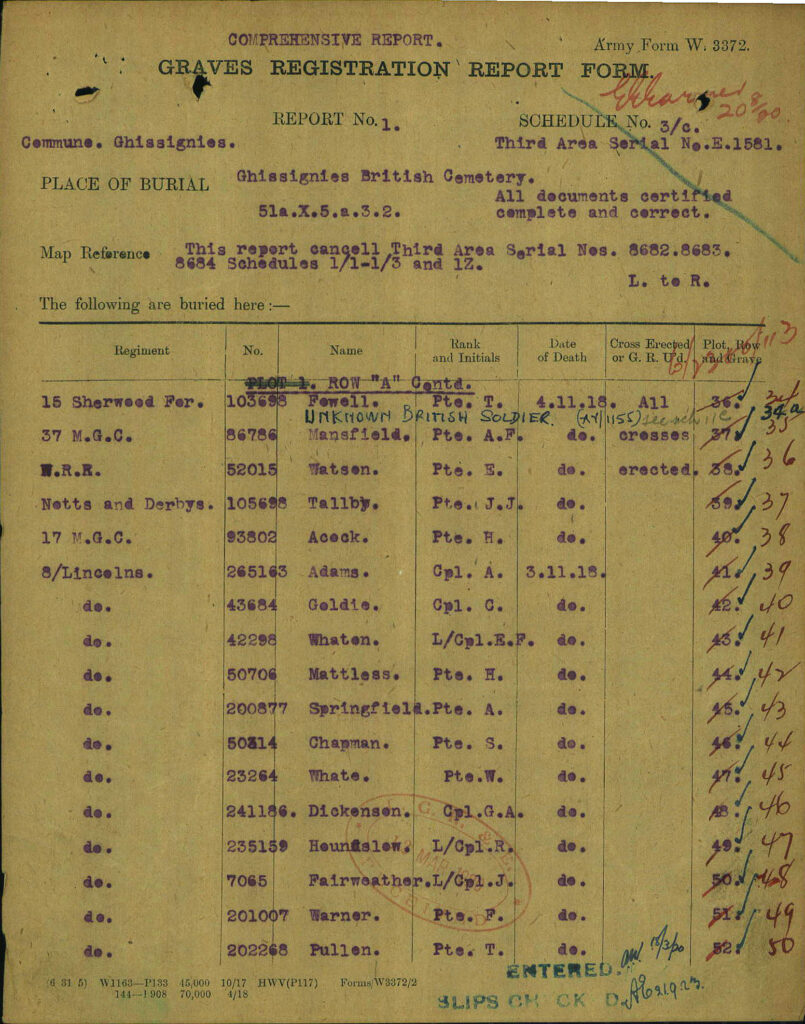
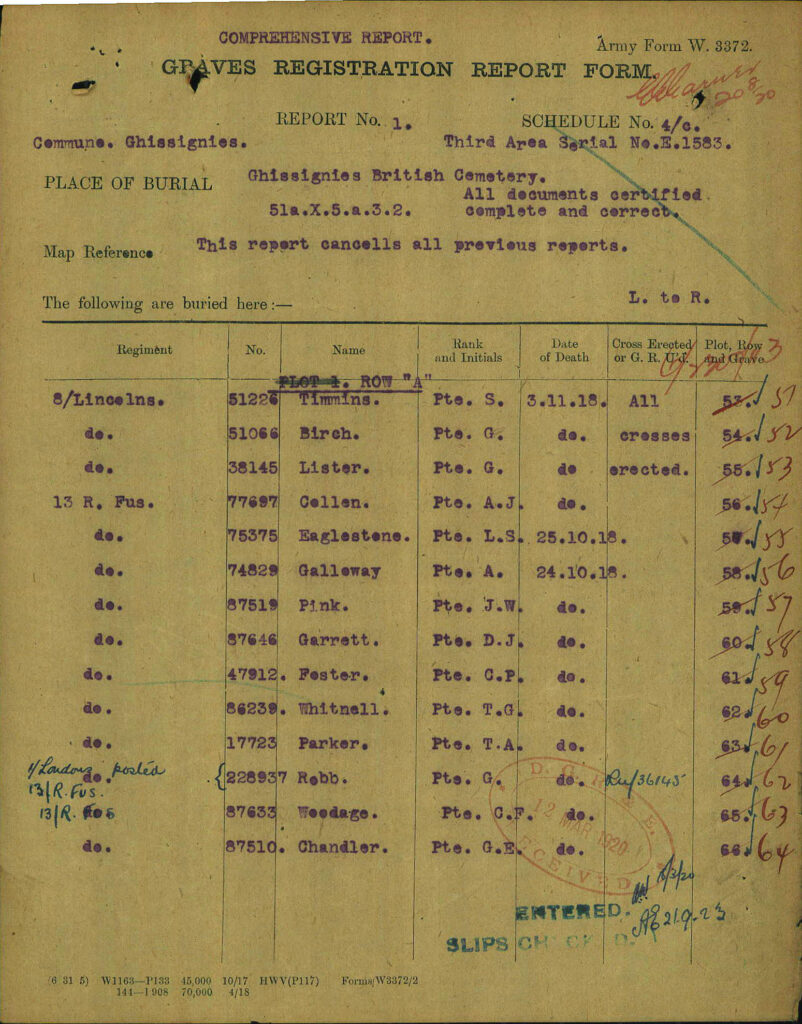
It includes 241186 Corporal George Dickenson whose body had six bayonet wounds, one hand cut off and both eyes missing (apparently gouged out). Two graves along lies 7065 Lance Corporal John Fairweather MM, a recipient of the 1914 Star who went overseas with the 1st Battalion in September 1914, served with a number of different battalions and earned the Military Medal in 1917. I would welcome any further detail on these men. Many of the dead from this raid are listed in the Weekly Casualty List (War Office & Air Ministry ) for 28 January 1919.
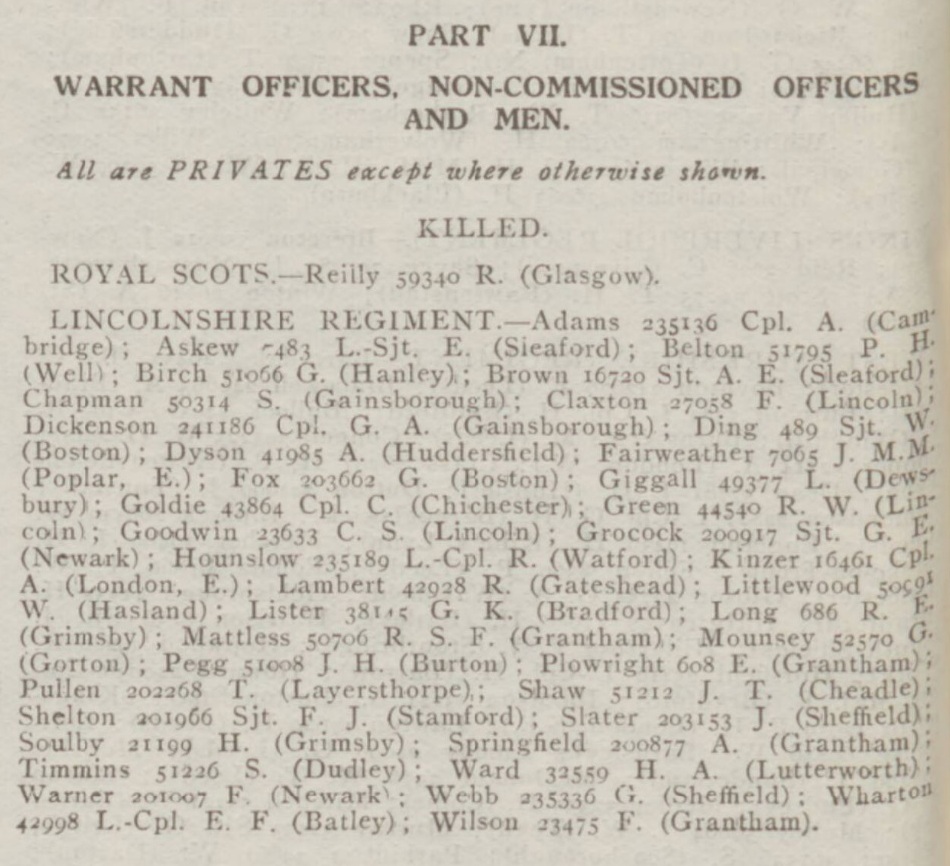
Weekly Casualty List (War Office & Air Ministry ) – Tuesday 28 January 1919
So, a strange and disturbing case of battlefield mutilation right at the end of the war. The village is once more a quiet spot and a roundabout now sits at the road junction. A water tower has been built between the Route de le Quesnoy and Route de Louvigny. Other than the military cemetery 100 metres down the road towards the village centre there is nothing to indicate any fighting took place here. When we get out of lockdown and visits to France and Flanders recommence I will stop at Ghissignies, far from the well-trodden spots of the Ypres Salient or the 1916 Somme battlefield and pay my respects to those men killed just a few days before the guns fell silent.

Modern aerial view of raid site at Ghissignies. Taken from Geoportail
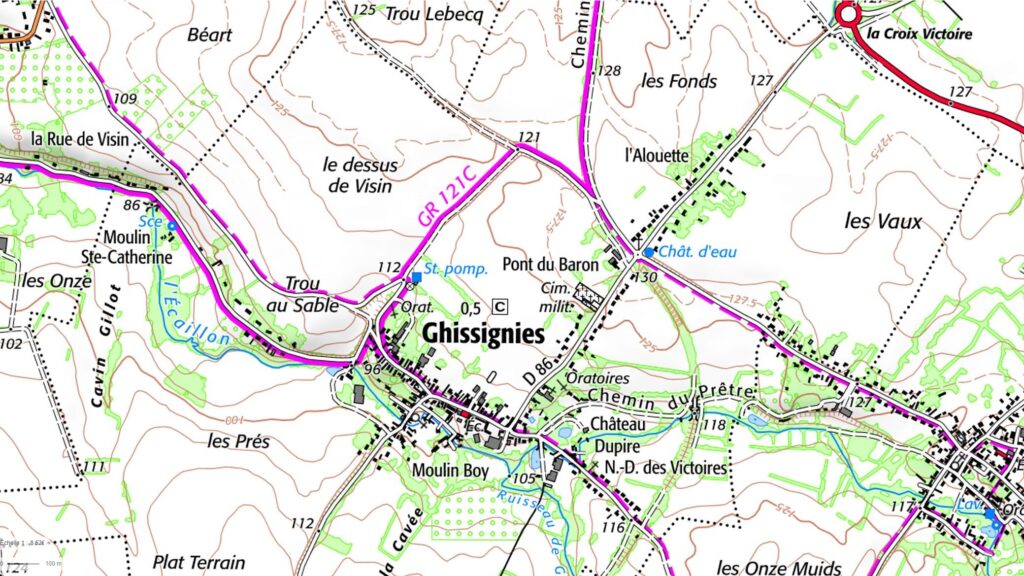
IGN map of the village of Ghissignies
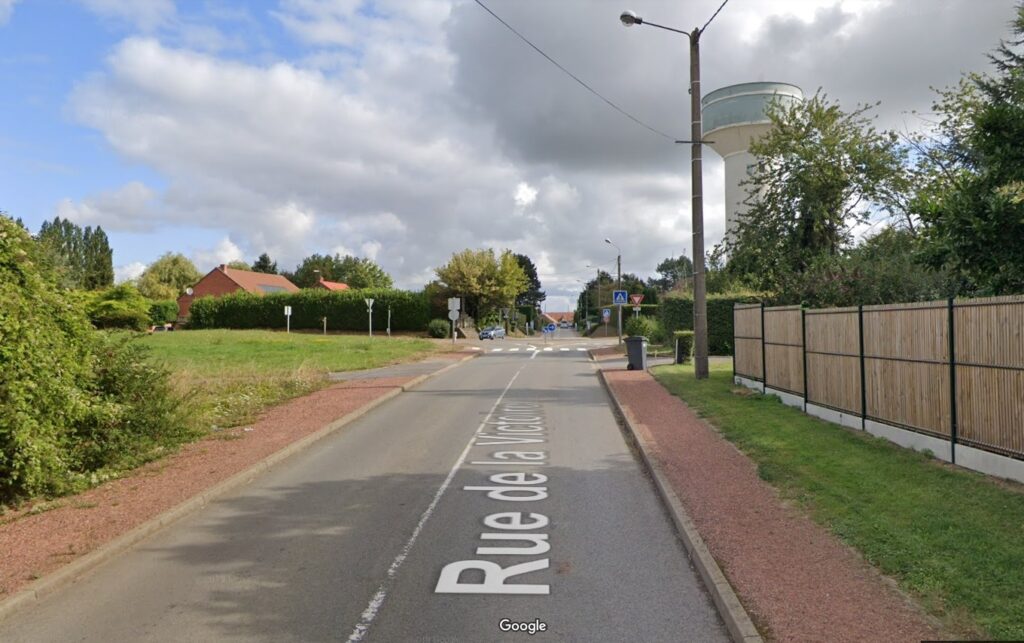
Image from Google Street View looking up to site of railway embankment and raid
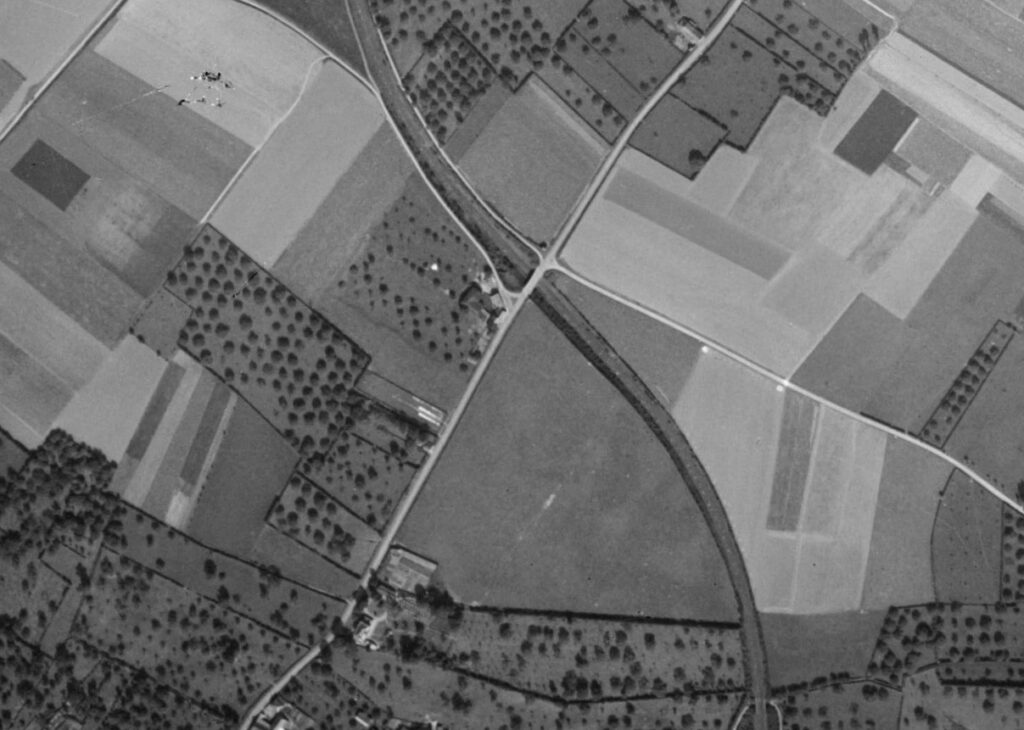
13 Sept 1949 aerial of Ghissignies, the railway embankment and crossroads
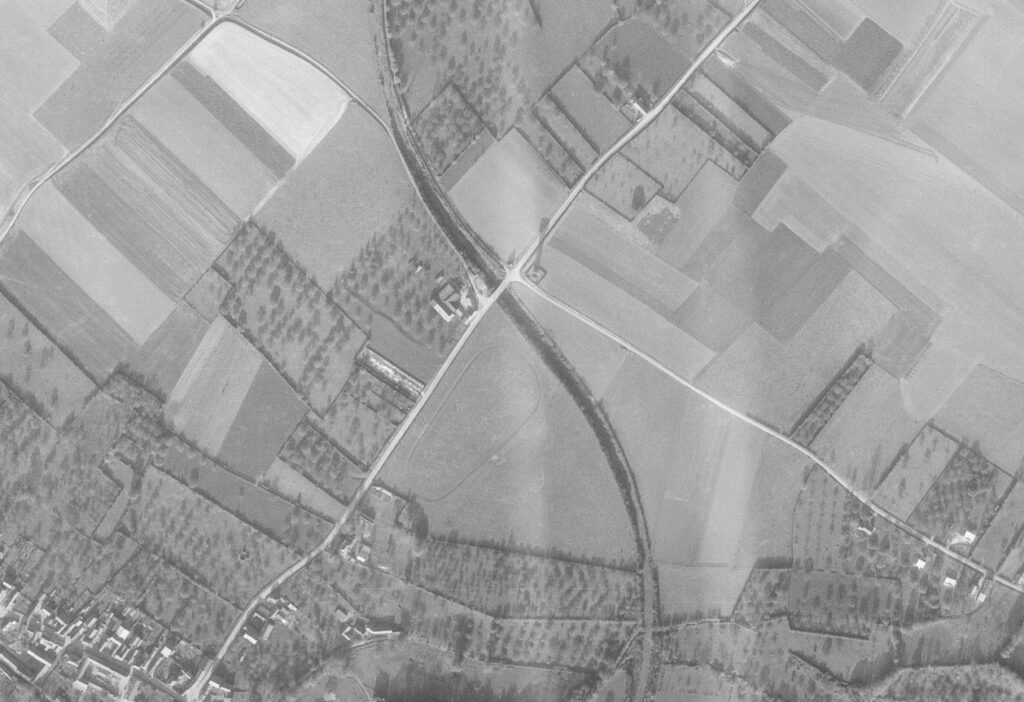
15 November 1968 aerial of Ghissignies showing water tower to the east of the crossroads
JB, 31 March 2021
